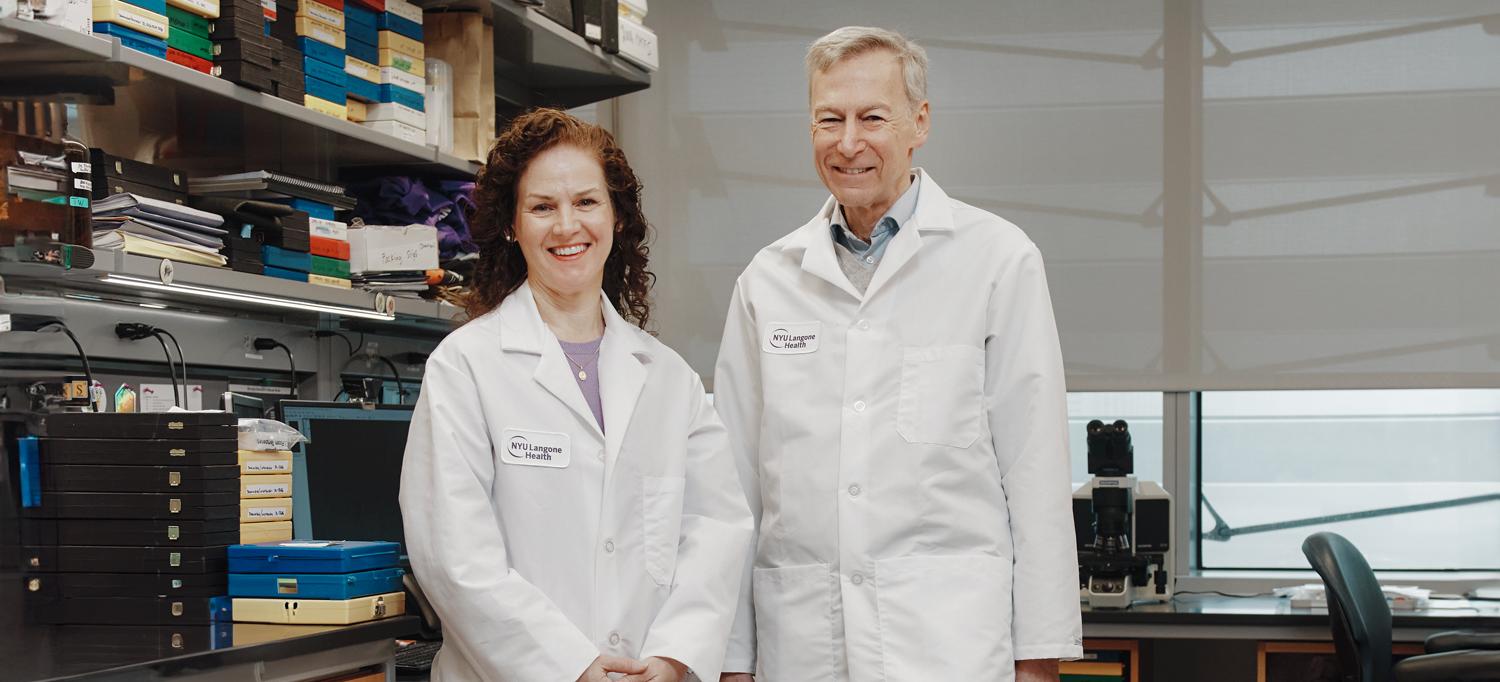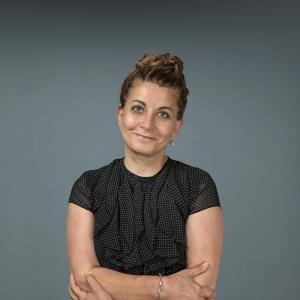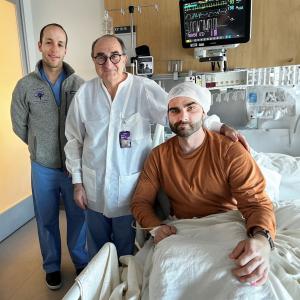
Epilepsy specialist Dr. Orrin Devinsky (right) advocated for Laura A. Gould’s appointment to the faculty of NYU Grossman School of Medicine in December 2023. The two established the Sudden Unexplained Death in Childhood Research and Registry Collaborative, which has collected data on more than 360 cases.
Credit: Tony Luong
For more than two decades, Laura A. Gould, MSc, MA, PT, has spearheaded research to unlock the causes of sudden unexplained death in childhood (SUDC), a tragic phenomenon that affects about 400 children age 1 and older in the United States each year. What drives her is a mother’s worst nightmare: one day in 1997, when she went to wake her 15-month-old daughter, Maria, from a nap, she found the toddler lying on her stomach, still and silent.
“I called 911 and did CPR, but it was too late,” says Gould, now a research assistant professor of neurology at NYU Grossman School of Medicine. “Maria was my firstborn. She’d just learned to blow bubbles. She loved to dance. And now she was just gone.”
Maria had had a low-grade fever the night before, but she had seemed fine in the morning. The initial autopsy found nothing amiss. Weeks later, the medical examiner declared that she had died from myocarditis, an inflammation of the heart muscle. However, Gould, a physical therapist at the time, had seen no evidence of that illness; she sent autopsy slides to several cardiac pathologists, who ruled it out. Ultimately, the cause of her daughter’s death was changed to “unexplained.”
Heartbroken, Gould embarked on a deep dive in search of an explanation. She soon discovered that while a huge body of research existed on sudden infant death syndrome (SIDS), the leading category of unexplained deaths in babies under 1 year old, virtually nothing was known about its counterpart in older children.
So Gould went to work. She gave the phenomenon a name (“I thought, ‘It’s a sudden death, it happens in childhood, and it’s unexplained,’” she says). She advocated for a law in her home state, New Jersey, that established forensic protocols for investigating sudden deaths in infants and children. Later, she helped to develop nationwide guidelines with the U.S. Centers for Disease Control and Prevention and championed federal legislation to improve data collection for such deaths.
Starting in 1999, she partnered with a pediatric pathologist at the University of California San Diego to study SUDC’s causes and risk factors. Among their most striking findings: victims were 10 times more likely to have a history of febrile seizures—convulsions that can occur when a young child has a fever above 100.4 degrees F—than the overall population of children.
After her collaborator retired in 2012, Gould reached out to Orrin Devinsky, MD, a renowned neurologist and director of NYU Langone’s Comprehensive Epilepsy Center, who was studying sudden death in children and adults with epilepsy. “I’d never heard of SUDC, but I realized this would be an opportune place for me to contribute,” Dr. Devinsky says. He quickly hired Gould as a full-time research scientist. Together, they established the SUDC Research and Registry Collaborative, a multisite project that has now collected data on more than 360 cases, including DNA analysis from 124 victims and their parents; it is the largest SUDC registry in the world.
From the collaborative’s data, a multidisciplinary team of investigators has identified several genetic abnormalities that likely explain some cases of SUDC, and in January 2024, Gould was the lead investigator for a groundbreaking study, published in the journal Neurology. In examining videos of seven toddlers with SUDC whose final moments had been caught on crib cameras, the team found that five had definitively experienced a convulsive seizure before dying, and a sixth likely had experienced one.
“This may turn out to be the smoking gun,” says Dr. Devinsky, the study’s senior investigator. “It’s too soon to say whether seizures are the most common mechanism in SUDC, but they’re clearly an important factor.”
Besides helping Gould advance her cause, Dr. Devinsky has nurtured her growth as a scientist. He encouraged her to pursue a master of science degree in clinical investigation, which she completed last year. He then supported her appointment to the faculty in December 2023, enabling her to pursue independent research grants. “Some of the most important contributors to science have been intelligent and driven outsiders,” he notes. “Laura’s experience as a mom is her secret sauce.”
Gould, founder and past-president of the SUDC Foundation, will describe her remarkable journey at NYU Langone’s first TEDx talk, Beyond Boundaries—Innovating for a Healthier Tomorrow, in June.
She continues to pursue answers about the terrible mystery that changed the course of her life and her career. “We’re going to need a lot more research to understand what’s behind these tragedies and how to prevent them,” says Gould. “But with the help of dedicated researchers and highly motivated parents, we’re moving the needle.”

